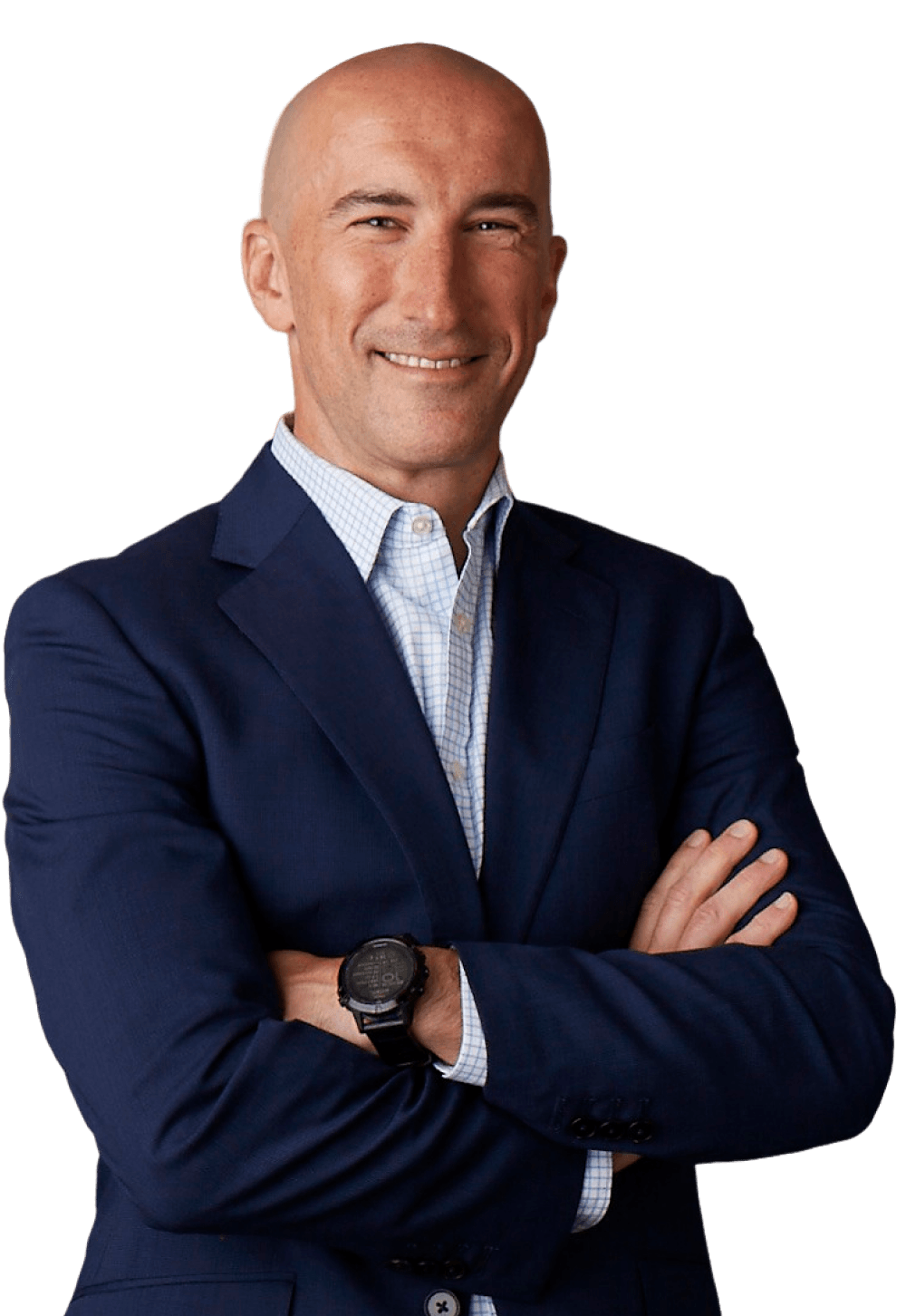Schedule a talk with one of our advisors to learn more about Summitry and how we can help you get a foothold on your financial life.
Team
Insights
Pages
- Let's Talk
- Phone / Directions
Early Retirement Planning: 6 Strategies for Success
May 9, 2024

Leverage your last few years of high taxable income to achieve your goals
Many people have a magic number in their heads on when the optimal point would be to retire. “I need $5M / $10M / $15M.” But the reality is there is no “magic number”. Instead, defining your goals and objectives for your next chapter of life will help you design a financial plan that ensures a fully funded retirement. Retirement may be achievable sooner than you think. With proper retirement planning and guidance, you can take advantage of the last few years of high taxable income to achieve and even optimize your post-retirement goals. We covered these strategies and more in our recent webinar, available here on demand.
Take our clients, Dave and Katherine Hamlin* for example. Now 46 and 44 years old, both have had successful careers in high-tech and earn a considerable annual income. Their kids keep them very busy with extracurricular activities and they are approaching college age. Dave and Katherine are burnt out, and they lament that at the peak of their careers, making a million dollars combined annually, somehow money still feels tight. It causes angst about whether early retirement is in the cards for them.
Through financial planning conversations with their Summitry advisor, the couple learned not only could they retire early, but many of their broader financial goals could be met with some keen strategies.
*Dave and Katherine Hamlin are fictitious names, but the scenario described is based on actual client experiences.
1. Convert IRAs to Roth IRAs for Substantial Tax Savings
When Dave and Katherine finally stop working in their early 50s, they will have a couple of decades with minimal taxable income. By creating a multi-year strategy to gradually convert a portion of multi-million-dollar pre-tax IRA money to a Roth IRA, the couple can diversify some of their taxable retirement accounts into a tax-free account, paying 10%-12% marginal tax bracket at the time of conversion. If they wait and let the fund grow in tax-deferred in the pre-tax IRAs, they will most likely have large Required Minimum Distribution (RMD) in the future and end up paying 32%-35% marginal tax rate on the same dollar. A 20% tax arbitrage has a big impact, particularly when the impact gets compounded over many decades!
Roth IRAs offer tax-free growth potential. As early retirees, they will have many years to enjoy the tax-free compounding of the wealth held in the Roth IRA. Unlike traditional IRAs where contributions are tax-deferred, qualified withdrawals from Roth IRAs, including both contributions and earnings, are tax-free. Roth IRAs are not subject to RMDs during the account holder’s lifetime. This means retirees can maintain control over when and how much they withdraw from their Roth IRA, potentially minimizing taxable income in retirement.
Roth IRAs can offer estate planning advantages, as they are not subject to income tax when inherited by beneficiaries. This can result in tax-free distributions for heirs, potentially maximizing the value of the inheritance.
2. Transform Concentrated Stock Holdings into Retirement Income with a CRUT
Like many Bay Area professionals, Dave and Katherine have accumulated a lot of highly appreciated stocks in their companies. An outright sale of those appreciated securities would generate significant capital gain tax liabilities, particularly when they are already in the highest marginal tax bracket. On the other hand, holding over 50% of their liquid net worth in a couple of stocks is too risky as they transition into a “work optional” phase.
A Charitable Remainder Unit Trust would allow Dave and Katherine to diversify their holding without immediate tax liability, use the proceeds to generate a lifetime stream of income, and only pay taxes when they start taking a distribution. On top of that, they also have a charitable deduction to offset their ordinary earned income. Given that they are in the highest tax bracket for both Federal and California, each dollar of charitable deduction will reduce their tax liability by 50 cents. The amount of the charitable deduction from contributions to the CRUT depends on their age, distribution rate, and current interest rate.
At the expiration of the CRUT, at death for a lifetime CRUT, the assets in the CRUT flow to one or more charities of their choice. Contribution to the CRUT is an irrevocable decision, and it is important to seek counsel from your financial, tax, and legal representatives before you decide.
3. Finance Larger Expenses While You’re Still in a High Tax Bracket
If having a vacation home or another high-value asset to enjoy in your retirement is your goal, buying it before you retire can have a significant positive impact on your finances. For example, if you plan to take a loan for a vacation home, your interest rate could be significantly lower while your income is still high. Your debt-to-income ratio is one of the most important factors in obtaining the best interest rate available. A one percent increase in interest rate on a standard 30-year, fixed-rate $1 million loan will cost you $200,000 more in interest over the term of the loan.
4. Take Advantage of a Deferred Compensation Plan
Many Bay Area tech companies have recently offered deferred compensation plans as an attraction and retention tool for key employees.
A deferred compensation plan is an arrangement between an employer and an employee in which the employee agrees to defer receiving a portion of their compensation until a future date, typically termination of employment or a pre-selected date. Employees can defer most of their salary and cash bonus, but not equity compensation. The fund can be invested in a number of pre-selected investments.
For many of our clients, income from RSUs only would push them into a high tax bracket. By deferring the cash income, they can reduce taxable income when their tax rate is high and take distribution and pay taxes when they have less taxable income, and their tax rate is low.
Note: reducing your cash compensation might impact your ability to contribute to 401(k), get employer matching, or participate in an ESPP program. It is important to have a well-defined plan before you make your selection.
5. Make Your Charitable Dollars Go Further
If charitable gifting is one of your goals, you may consider a donor-advised fund (DAF) to pre-fund the next several decades of gifts while optimizing tax benefits and stretching your dollars even further. DAFs are particularly popular among individuals and families with significant charitable intent and assets who want to strategically plan their philanthropic efforts over time.
You may contribute cash, securities, or other assets to create the fund. These contributions are eligible for an immediate tax deduction, subject to IRS guidelines. Once the contributions are made, the assets are invested for potential growth. Donors can then recommend grants from the fund to qualified charitable organizations. You’ll receive an immediate tax deduction for your contributions to the DAF, even though the grants to charitable organizations may be made over time. Additionally, any investment growth in the DAF is tax-free.
Another client, Suzanne, had a goal after retirement of giving back to the engineering school she attended in the mid-west. She had on-and-off discussions with the school about creating a scholarship endowment that would give out a $20K scholarship every year to the next generation of female engineers. However, with her crazy work schedule, Suzanne did not have time to work out the details.
Summitry advisors created a DAF as a holding vehicle for Suzanne. She funded it with her highly appreciated NVDIA stocks, avoiding the high tax implications of selling the stock (23.8% federal + 13.3% CA state) while also receiving the full charitable deduction on the fair market value of the stocks. This offset her ordinary income, which would have been taxed at over 50% (37% federal + 13.3% CA state). In the end, it only costs Suzanne 25 cents for a $1 contribution. In the meantime, the fund continues to grow tax-free in the DAF until Suzanne has time to focus on her charitable endeavor. If Suzanne had waited until she retired, she would have been in a much lower tax bracket and the tax saving impact would have been much smaller.
6. Include Healthcare as a Component of Your Retirement Plan
Finally, one of the most important considerations for early retirement is planning for Healthcare before Medicare eligibility. Since most of us have enjoyed corporate-sponsored healthcare plans for most of our adult careers, the idea of retiring early and having to find affordable healthcare insurance for ourselves and our families can be daunting. Our webinar, “Early Retirement: Smart Financial Moves and Medical Insurance Planning” covers this in more detail along with the strategies discussed above.
In short, healthcare options between COBRA and Medicare do exist and can be affordably attained, especially if you plan it into your overall financial plan as you would any other retirement expense.
Summitry advisors are available to help you create a personalized financial plan that takes all of your near and long-term goals into consideration. Contact us today to discuss your future.
GET THE NEXT SUMMITRY POST IN YOUR INBOX:
MORE INSIGHTS AND RESOURCES
Let's talk
Schedule a talk with one of our advisors to learn more about Summitry and how we can help you chart a path for your financial future.

Alex Katz
Chief Growth Officer


